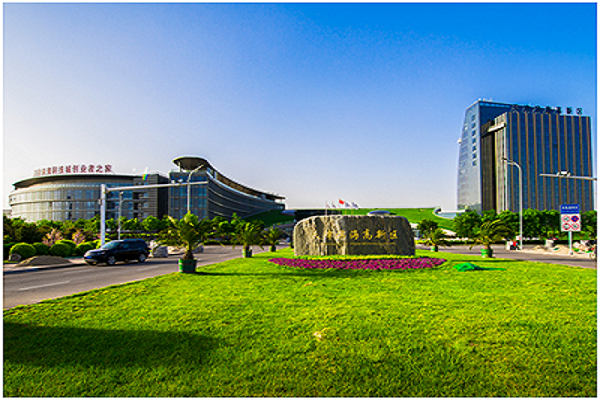Tianjin Binhai Hi-Tech Industrial Development Area

The core area of Tianjin Binhai Hi-Tech Industrial Development Area was established by the CPC Tianjin Committee and the municipal government in 1988 and included in the first group of state-level development zones by the State Council in 1991.
Covering an overall planned area of more than 300 sq km, it consists of four core areas -- Huayuan Science Park, the northern part of Future Technology City, the southern part of Future Technology City and the Marine Science and Technology Park.
Tianjin Binhai Hi-Tech Industrial Development Area has developed an economy that relies on sci-tech innovation. Its main economic performance indicators have been maintaining an annual growth rate of more than 30 percent.
In the first quarter of 2018, the area’s GDP was 44.15 billion yuan ($6.51 billion), up 13.2 percent year-on-year; the output value of industries above the designated size reached 43.62 billion yuan, an increase of 19.2 percent; the fixed asset investment amounted to 6.62 billion yuan, up 11 percent; the general public budget revenue 2.88 billion yuan, up 13 percent; the actual utilization of domestic capital was 6.61 billion yuan and the actual utilization of overseas capital increased by 12 percent year-on-year to $213 million. The area has maintained a sound growth momentum in fixed asset investment and seen rapid growth in tax revenue in the first quarter of this year.
The area has always believed that science and technology constitute a primary productive force, emphasized improving its independent innovation ability, attached importance to environmental protection and promoted an enterprise-led research and development system. It has also carried out a three-level incubation program for entrepreneurship.
The area encourages services for innovation, and tries to boost industry-university-research cooperation on various levels. It plans to build industrial innovation clusters, foster brands with regional characteristics, continuously promote industrial structure featuring high-technology and high-quality growth, and develop into an independent innovation highland research and development center. It is a global high-tech pioneer, and an important hub supporting China’s third economic growth pole after the Pearl River Delta and the Yangtze River Delta.
Invest in China Copyright © 2025 China Daily All rights Reserved
京ICP备13028878号-6
 京公网安备 11010502032503号
京公网安备 11010502032503号





